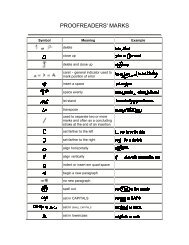View - Martin Kröger - ETH Zürich
View - Martin Kröger - ETH Zürich
View - Martin Kröger - ETH Zürich
Create successful ePaper yourself
Turn your PDF publications into a flip-book with our unique Google optimized e-Paper software.
THERMODYNAMICALLY ADMISSIBLE REPTATION MODEL<br />
1303<br />
TABLE II. Characterization of the three models discussed in this work. Concerning the model predictions, the<br />
main discrepancies between FCS and our model are: larger stress overshoot predicted by FCS in the startup of<br />
steady shear flow Fig. 3 and larger second undershoot of the extinction angle predicted by FCS Fig. 12 due<br />
to segment connectivity only incorporated into FCS. The main discrepancies between predictions of MLDS and<br />
our model are: undershoots in transient stress and extinction angle only predicted by our model due to differences<br />
in the incorporation of CCR. For a detailed comparison see text.<br />
Parameters<br />
Model FCS MLDS This work<br />
Adjustable<br />
parameters<br />
The reptation time d<br />
and the number of<br />
beads per chain N fit<br />
from linear viscoelasticity<br />
alone<br />
The plateau modulus<br />
G N<br />
0 , the reptation<br />
time d , and the<br />
Rouse time s fit<br />
from nonlinear data<br />
The plateau modulus<br />
G N<br />
0 and the reptation<br />
time d fit from<br />
nonlinear data<br />
Physical<br />
effects<br />
incorporated<br />
and<br />
corresponding<br />
mathematical<br />
means<br />
Parameters<br />
fixed by the<br />
chemistry of<br />
the polymer<br />
or physical<br />
arguments<br />
Reptation<br />
The number of<br />
entanglements<br />
per chain Z,<br />
the Kuhn step length<br />
a K , and the number<br />
of Kuhn steps per<br />
chain N K<br />
None The number of<br />
entanglements<br />
and the chain<br />
Incorporated into a<br />
set of Langevin equations<br />
for the chain motion<br />
The second term in<br />
the equation for the<br />
tube survival probability,<br />
Eq. 10 of the<br />
reference for MLDS<br />
per chain Z,<br />
the constraint release<br />
parameters 1 , 2 ,<br />
stretchability<br />
parameter max<br />
The stochastic term<br />
in Eq. 19<br />
Avoiding IA<br />
approximation<br />
As for ‘‘reptation’’<br />
plus an equation for<br />
the tube motion<br />
Not considered<br />
The drift term in Eq.<br />
19 and the creation/<br />
destruction term in<br />
Eq. 9<br />
Chain<br />
stretching<br />
As for ‘‘avoiding<br />
IA approximation’’<br />
The equation for<br />
stretch, Eq. 12 of the<br />
reference<br />
The equation for<br />
stretch, Eq. 1<br />
Double<br />
reptation<br />
By a random,<br />
instantaneous constraint<br />
release algorithm<br />
Not considered<br />
The 1 -term in the<br />
orientational diffusion<br />
coefficient, Eq. 11<br />
Convective<br />
constraint<br />
release<br />
CCR<br />
As for ‘‘double<br />
reptation’’<br />
The term with the<br />
‘‘switch’’ function in<br />
Eq. 10 and the last<br />
term in Eq. 12 of the<br />
reference<br />
The 2 -term in the<br />
orientational diffusion<br />
coefficient, Eq. 11<br />
Chain-length<br />
breathing<br />
and segment<br />
connectivity<br />
Incorporated into a<br />
set of Langevin equations<br />
for the chain<br />
motion<br />
Not considered<br />
Not considered<br />
the models give similar results for the two lower shear rates. It turns out that the FCS<br />
model overpredicts the overshoot, our model predicts the magnitude precisely, and the<br />
MLDS model slightly overpredicts the overshoot and does not predict an undershoot.<br />
Comparisons between our model predictions and experimental data are also made for the





